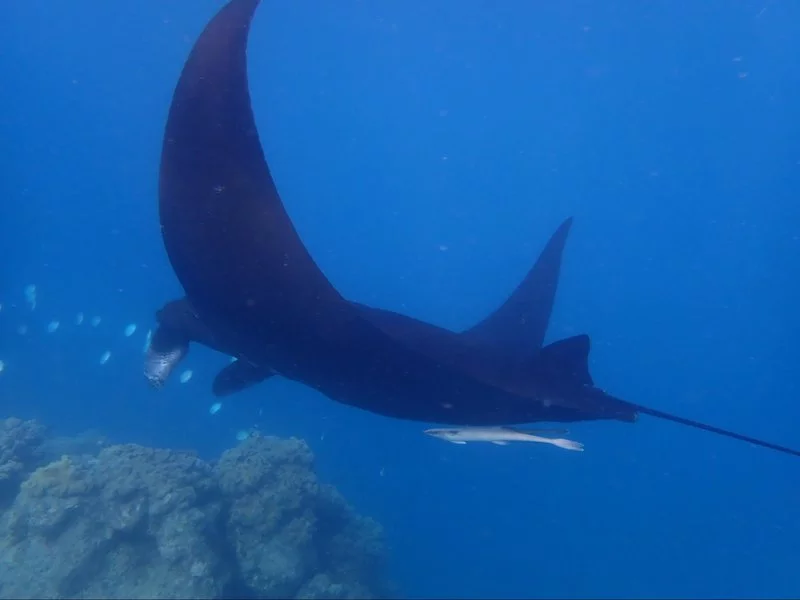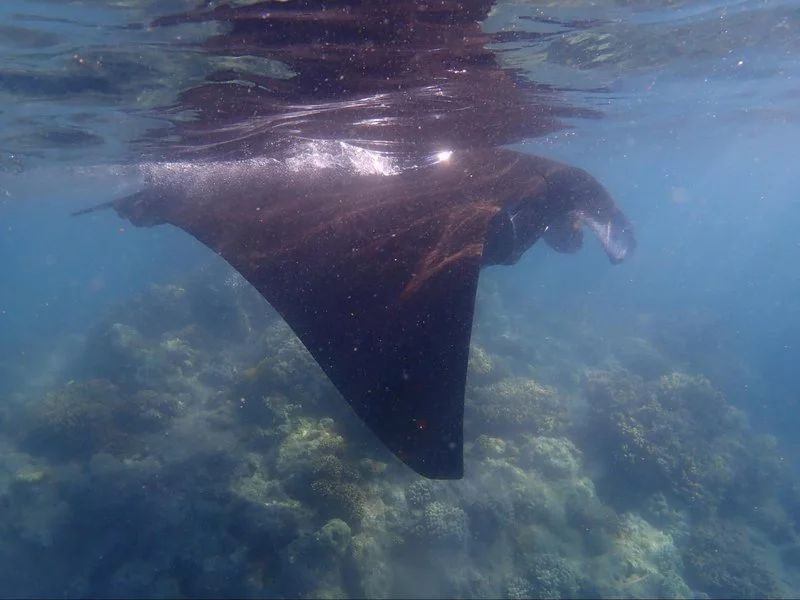Manta rays are the largest rays on earth and up there with some of the largest fishes. They belong to the genus Mobula which includes devil and mobile ray species. Not only are they one of the largest fishes but they also take the title of the smartest. They have the largest brain to size ratio of any fish which indicates a high intelligence and they have the largest brain of any fish, up to 10 times larger than that of a whale shark. The brain of these animals allows these animals to be quite skilled at problem solving, communication and they have even been observed displaying self recognition, an ability that other highly intelligent animals such as dolphins, primates and elephants show. Their intelligence also means that they can be quite curious and playful, something which they are known and loved by divers for. Some mantas will even approach humans in an effort to interact with them, an unforgettable experience for the person.
Currently there are two species of manta ray that call our world oceans home, the larger oceanic manta ray which can grown to have a wingspan of 8 meters and weigh close to 3000 kilograms and the reef manta ray which although is the smaller of the two can still reach and impressive size with a 5 meter wingspan and weighing about 700 kilograms. Both of these gentle giants can have a lifespan of around 40 years in the wild. Female manta rays will reach sexual maturity at around 5-10 years old while males will reach this stage at around 5-6 years old. Each species will mate at different locations and seasons however their courtship behaviour is similar. During mating season the mantas will gather in large numbers and begin courtship. During courting a single female will be followed by a number of males, all swimming fast and making twists, turns and loops. Once the female has decided one of the males has proved himself she will slow down and mating will begin. The female will be pregnant for around 13 months before she gives birth to usually 1 but sometimes 2 pups. Soon after birth the pups, which can have a wingspan of up to 1.5 meters, are left to fend for themselves.

The oceanic manta ray can be found in tropical and temperate waters in both the northern and southern hemispheres. They spend the majority of their lives offshore and around oceanic islands. The movements of these mantas is largely influenced by the ocean currents as these currents carry the mantas food which means that they have a slightly more migratory lifestyle than the reef manta rays. These smaller mantas prefer to spend extended periods of time in particular areas, usually in shallow waters near shore or close to atolls and are sometimes referred to as resident or coastal manta rays. They have a slightly larger distribution than their oceanic cousins and are more commonly sighted.
Both of these species are filter feeders. When a manta ray is feeding it will extend its cephalic lobes (the two structures at the front of their head), which are normally coiled, these help to funnel water into the manta rays mouth where the plankton that they feed on can be filtered from the water through the gills and consumed. This feeding activity usually happens near the surface sometimes with large groups and can be a spectacular sight with the mantas rolling and gliding through the water to capture as much plankton as possible.

Here in the Whitsundays manta rays can be spotted around the islands in the winter months, the same time that the humpback whales arrive on their annual migration. Swimming with these gentle giants in their natural habitat is an incredible experience and also poses no threat to humans. Unlike their stingray cousins manta rays do not have venomous barbs on their tails and are completely harmless to us, sometimes even enjoying our company in their home. These animals actually have more to fear from us. Targeted and indirect (bycatch) fishing are some of the biggest threats to manta rays. They are not fished for their meat they are targeted for their gills which are used in some traditional medicines, however there is no scientific evidence to support this use. This has led to unsustainable fisheries in developing countries and manta ray populations have taken a hit and they are now listed as vulnerable to extinction by the IUCN.



